Configure routes
To have a working alarm system, you need to configure the routes. In general, a route refers to the path that a data packet travels on a network. This means, that routes connect softwares. You can manage all your routes from the Ozeki Alarm System. This guide will walk you through the steps of creating and deleting routes.
How to configure routes (plain directives)
To configure routes
- Load your Ozeki Platform
- Launch the Alarm System application
- Open the Route details side-panel
- Configure properties
- Set a tag
- Create Service period
- Delete routes if you don’t wish to use it anymore
Route configuration in Ozeki Alarm System (video tutorial)
The video guide below will walk you through the process of configuring routes in the Ozeki Alarm System. Routes are essential for creating a functional alarm system, allowing you to define how data packets travel within your network. This guide will show you how to efficiently build, change, and remove routes while outlining the advantages of defining ways.
To start managing your routes, launch the Alarm System application. You can do this by clicking the icon of it from the desktop, as you can see on Figure 1.
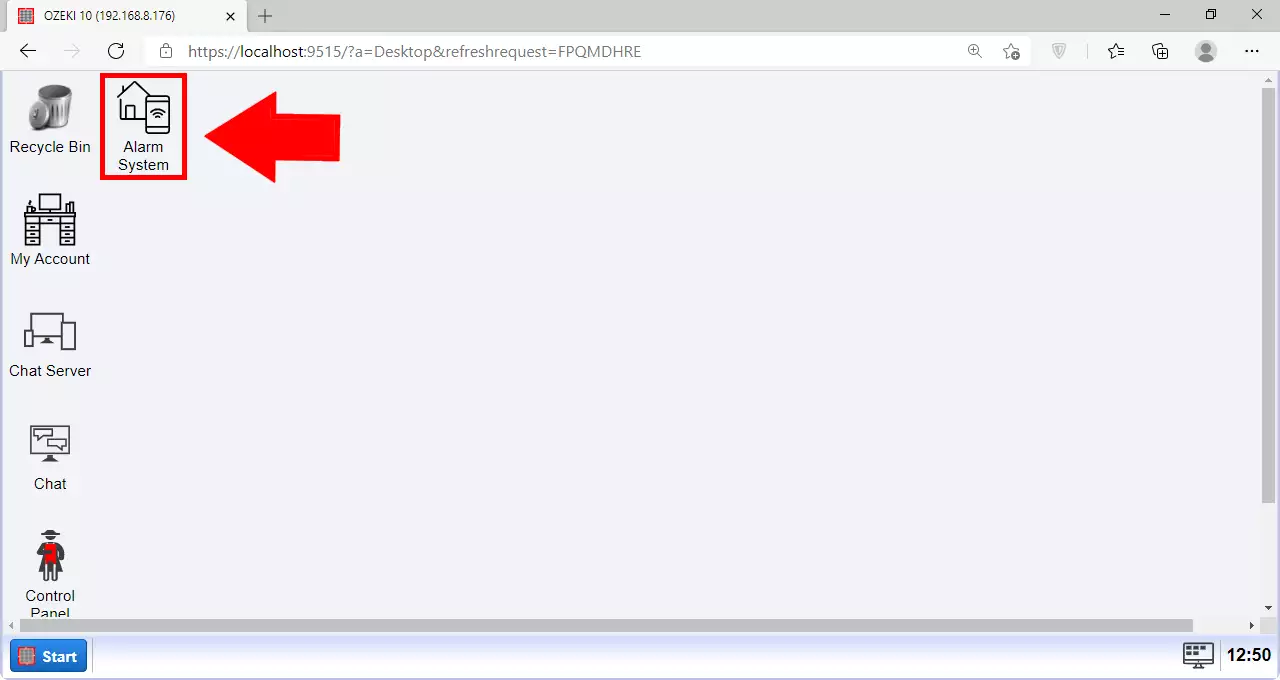
To add a new route to your existing ones, please click the Add new route… button, which is located under the Routing title. You can find where to click on Figure 2. It will open the Route details side-panel.
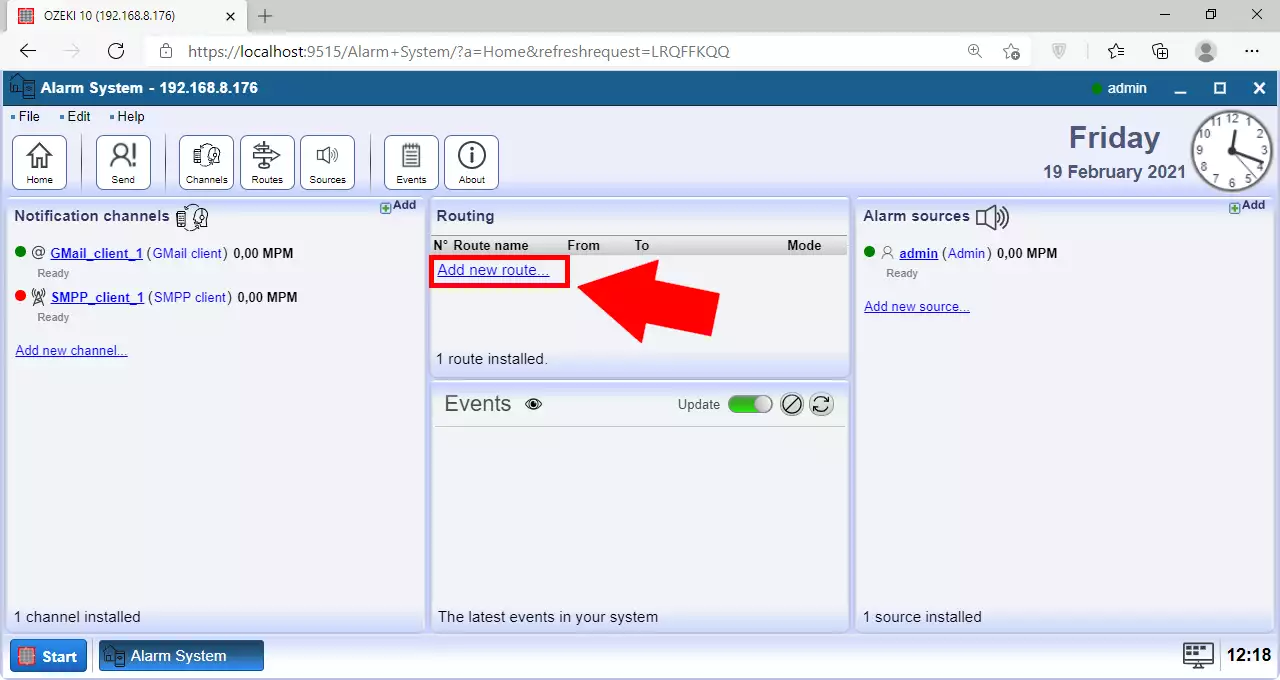
Here you can configure the different properties of the new route. You will use this route to forward messages between connections, so you will have to provide a sender and a receiver in the From and the To textbox. The From will be the address you wish to send messages from and the To, is where you expect the message to be delivered. You can see both of the textboxes on Figure 3.
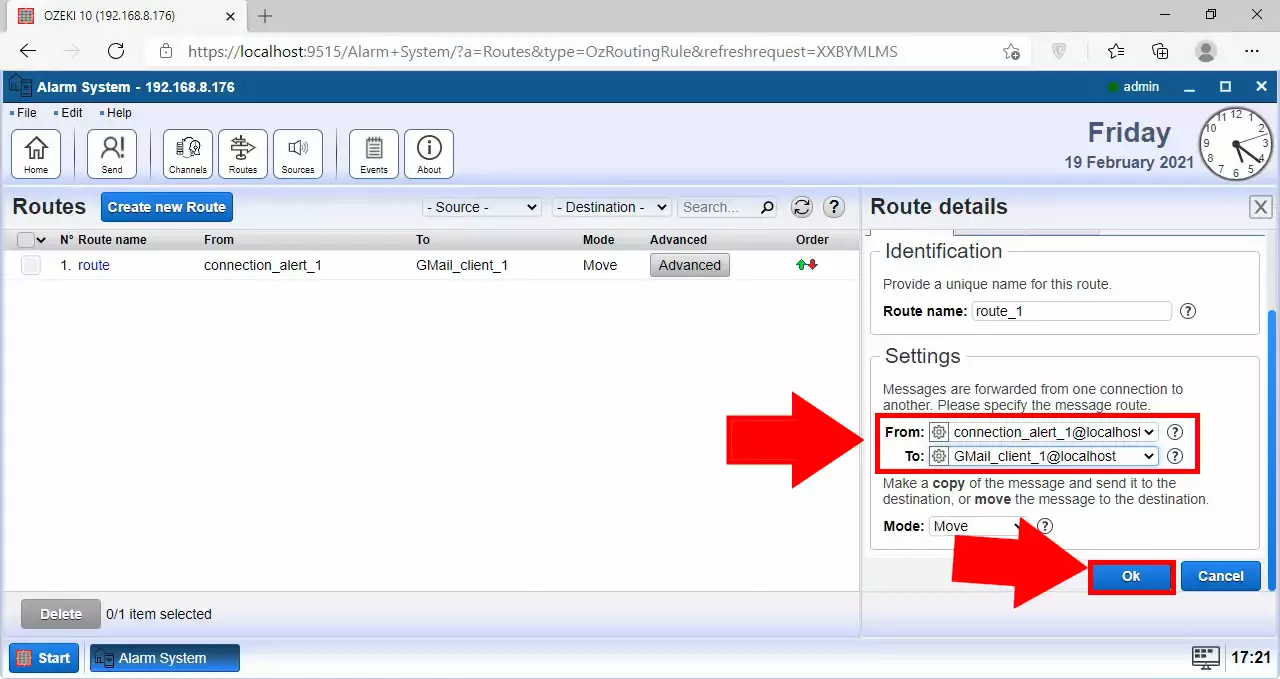
Using match conditions
Having a route with match conditions means that you can configure a connection that only works when a predefined set of criteria is true. This means that you can set a word, which when detected will be sent to a specific route, or you can set a time when the connection is allowed. These following steps will guide you through both of these match condition’s configuration.
The first step is to open the Alarm System application. In this app, you will be able to configure anything related to your alarm system, most importantly your routes. To find the icon of it, please look at Figure 4.

Now you need to create a match condition route. Do this by clicking the Add new route… button. It is located inside the Routing panel. You can see it on Figure 5.

Now you need to setup a route. This means that you have to provide a sender and a receiver address. The connection will forward a message from the From address, and send it to the To address. You can see the textboxes on Figure 6.

Now you need to provide the conditions when the message should be forwarded. To do that, please open the Advanced settings panel. You can do this by clicking the Advanced button next to the route you wish to modify. You can find it in the Routes list. To see the button, look at Figure 7.
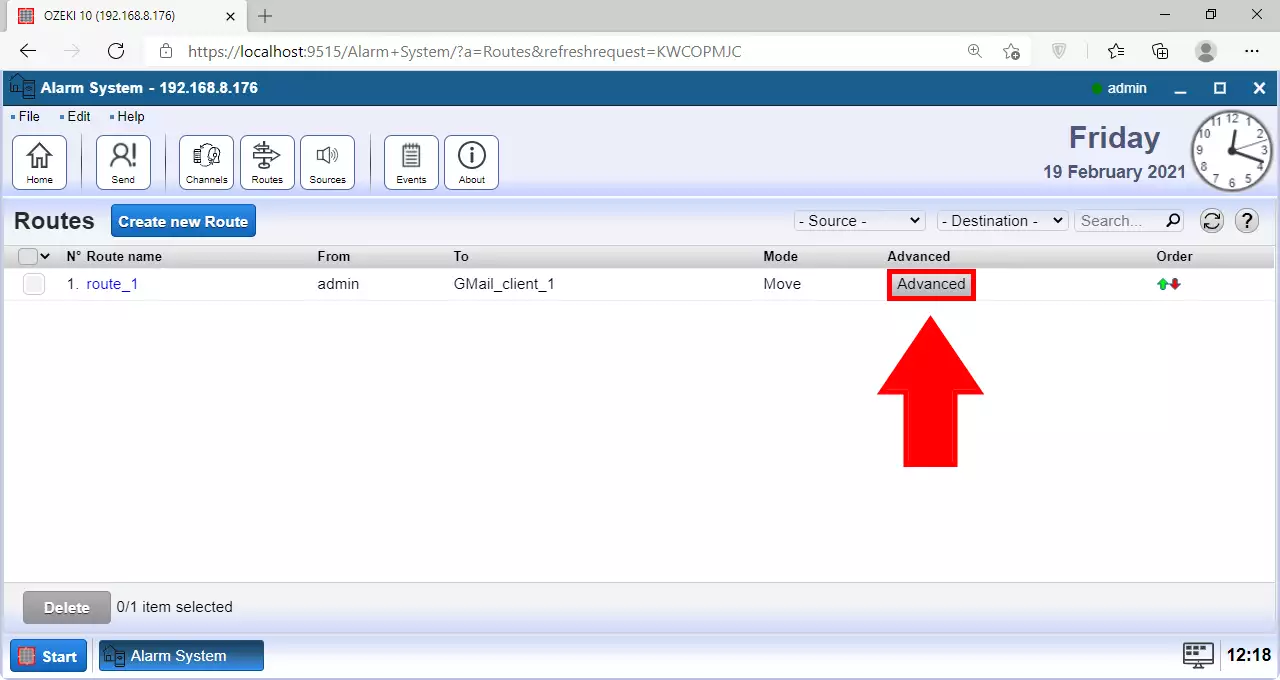
if you wish to have a word, which when detected, the message will be sent to the To address you provided before, just add a tag to the Route. You can do this by going to the Match tab of the route settings, and searching for a tag setting. Type in the word, that you wish to search for into the Tag value box, and then give the condition a name in the Tag name box. You can see both boxes on Figure 8.
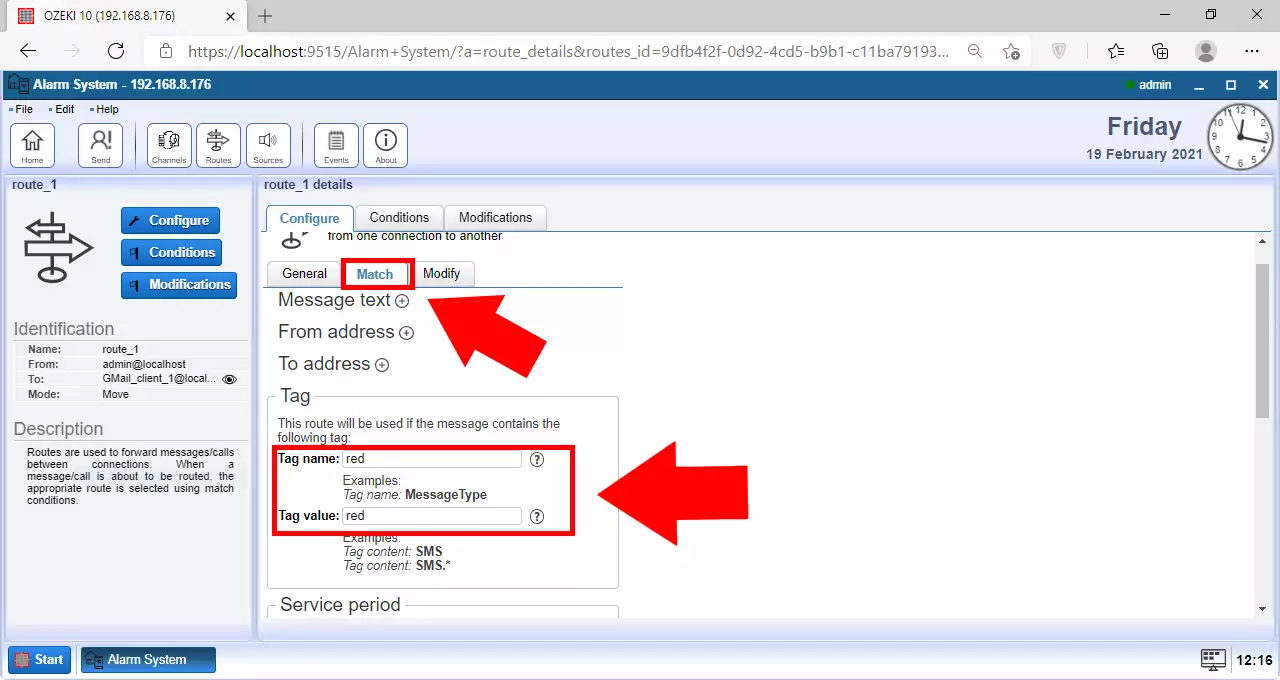
Now if you scroll down, you will find settings that lets you create a period when the route is working. On the Service period setting, you could set a start date when the route will start working and an end date when it will automatically stop working. Below that, there is a Time of the day setting, which lets your create hours when the route is active. Beside that, you will not be able to send messages through this route. The Day of week setting enables you to tell the route which days of the week it should work. Other days, it will not waste your resources. You can see all the settings on Figure 9.
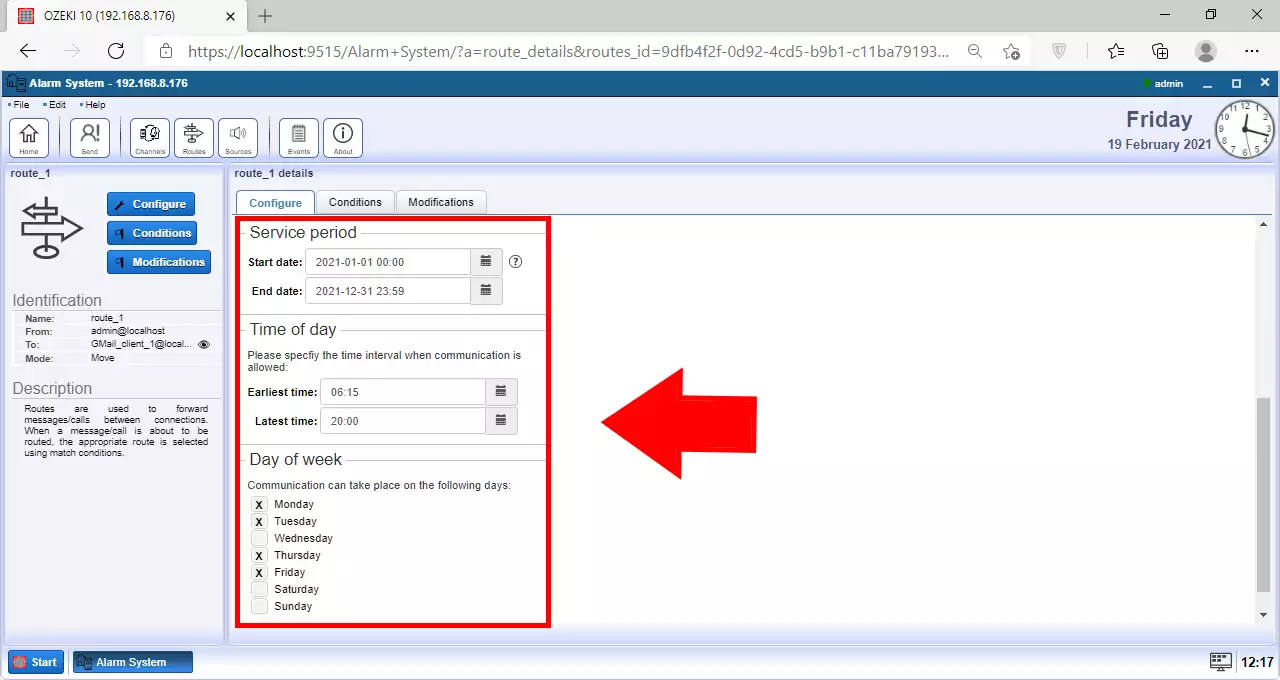
Delete routes
If you have a route that you created before and you don’t wish to use it anymore, you could delete it. This way it will not use your resources unnecessarily. This few steps will provide you all the info you need to delete a non-used route from your system.
To have access to your route list, launch the Alarm System app. You could manage your routes here, and most importantly, you could delete the unnecessary ones. You can see the icon you need to find with the help of Figure 10.

To see the list of your routes, open the Routes menu, which is located on the top of the Alarm System window as you can see on Figure 11. Click it and it will open the list of routes.
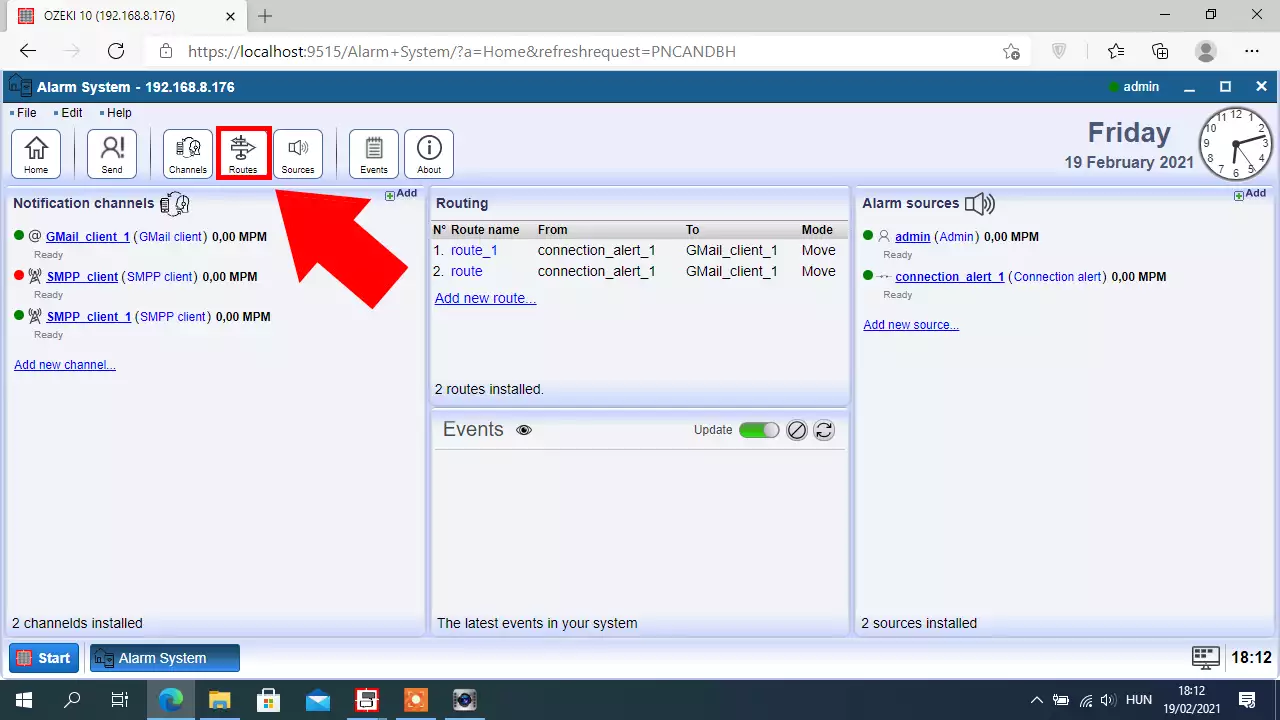
To delete routes, select the route by clicking the checkbox before the name of the route, and then click the Delete button which is located on the bottom of the screen. To see the process, look at Figure 12.
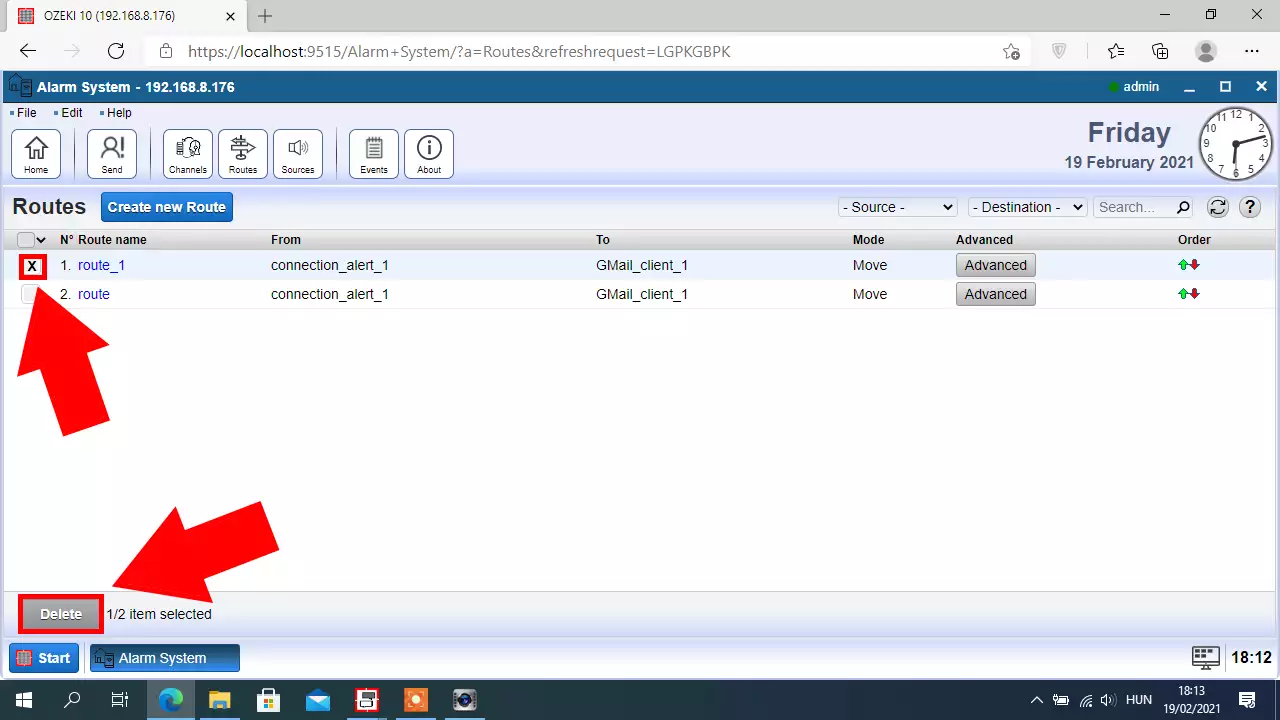
We hope that this guide was helpful. If you have any problem with any of the steps, feel free to contact us at info@ozeki.hu
Summary
You have learned how to configure routes for the Ozeki Alarm System. Routes are path that the data packets travel on. In IT, we use routes to connect software so that they can exchange data easily. Setting up the routings for your alarm system means that the software components of you system will be able to communicated with each other.
If you would like to find out more about this topic, feel free to visit the Ozeki webpage. We articles about topics like : SMPP Connection Configuration, or Connection Alerts.
If you would like to have a reliable and secure alarm system, download the Ozeki Alarm System and start working with it.
